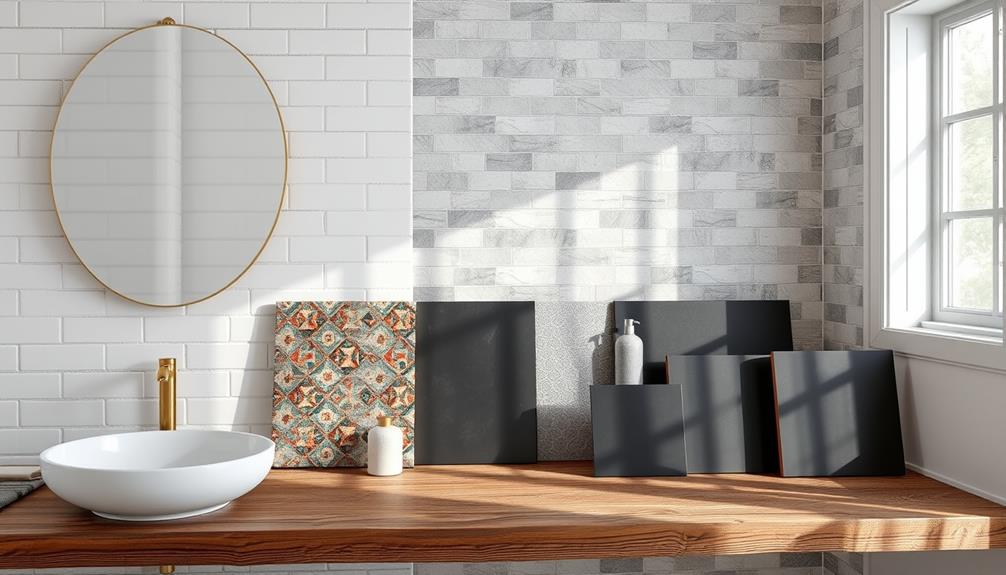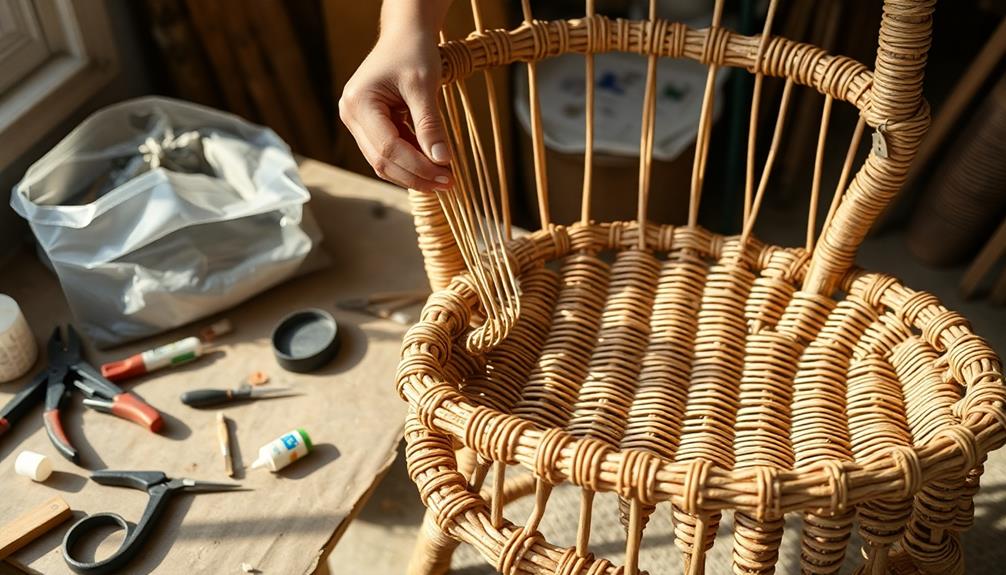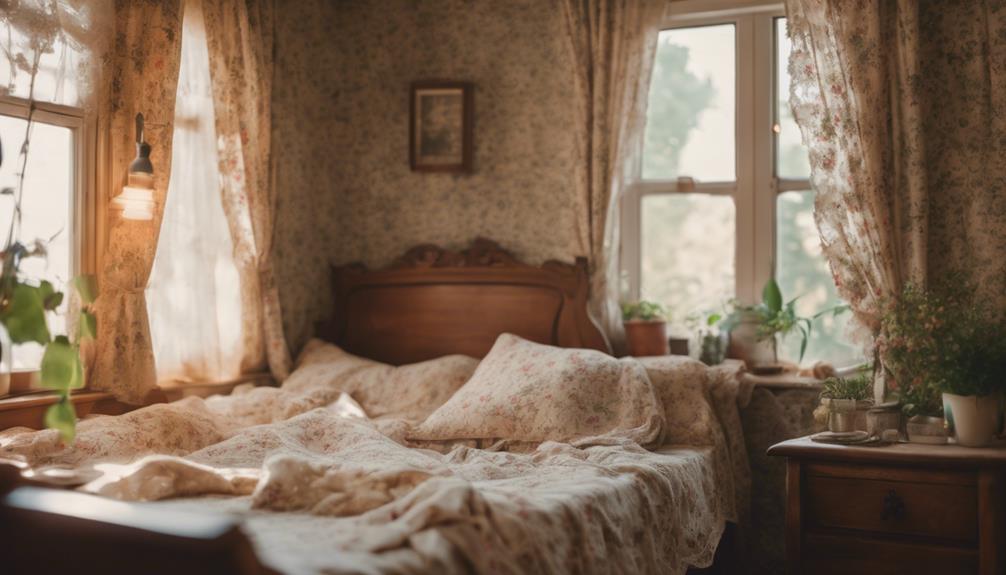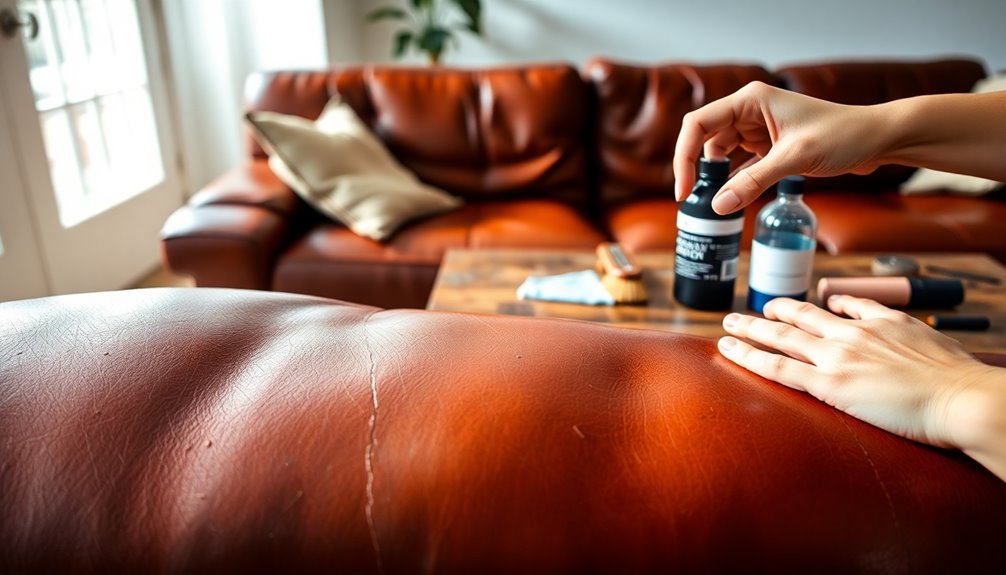Dark Academia fashion encourages you to embrace a sophisticated and timeless scholarly aesthetic. Begin with deep, muted tones such as black, burgundy, and dark brown, opting for high-quality natural fabrics like wool and velvet for both comfort and durability. Add layers to your outfits for depth and texture, accessorizing with vintage jewelry and dark leather satchels. Opt for classic footwear like loafers or Oxfords that seamlessly blend style and practicality. Incorporate elements that pay homage to literature and intellectual pursuits, impressing those around you. Dive deeper into this captivating style and make it your own.
Key Elements

In Dark Academia fashion, the color scheme, materials, and textures are essential to achieving that sophisticated look.
You'll want to focus on deep, muted tones and high-quality natural fibers to create an elegant ensemble.
Layering different textures can add depth and interest to your outfits while keeping you warm and stylish.
Color Scheme
The Dark Academia color palette captivates with its deep, muted tones like black, navy, and burgundy, creating an atmosphere of nostalgia and sophistication. You'll notice that this aesthetic leans towards dark brown, gray, and other rich, earthy hues, steering clear of bright colors and bold patterns. This deliberate choice reflects the timeless essence of classic literature and academic pursuits.
To truly embrace the Dark Academia vibe, focus on layering various shades within this palette. By combining different muted colors, you'll create visual interest and depth, making your outfits dynamic while staying true to the aesthetic. Natural fabrics like wool, tweed, and velvet play a crucial role, as they not only enhance the texture of your clothing but also provide that cozy, vintage feel you're aiming for.
Don't forget about accessories! Incorporate darker-toned leather satchels and vintage jewelry to reinforce the overall color scheme. These key elements will help you achieve a cohesive scholarly look that impresses everyone around you.
Materials
Natural fibers like wool, tweed, and cashmere form the backbone of Dark Academia fashion, offering both comfort and a timeless elegance that perfectly complements the aesthetic. These materials not only look sophisticated but also provide durability, making them ideal for layering. You'll often find pieces that feature a muted color palette, including deep browns, grays, and muted greens—colors that resonate with the scholarly vibe.
When it comes to footwear, leather options like loafers, ankle boots, and Oxfords are essential. They blend style and practicality, ensuring you're well-dressed for any intellectual pursuit. Vintage-inspired pieces, such as high-waisted trousers and pleated skirts, add a nostalgic touch to your wardrobe, reflecting a sense of history and refinement.
Incorporating these materials into your outfits allows you to express your individuality while staying true to the Dark Academia aesthetic. Look for well-crafted garments that emphasize natural fibers and subtle designs, steering clear of bold patterns and denim. This thoughtful selection of materials will certainly elevate your style, helping you make a lasting impression in any setting.
Textures
Rich textures like wool, tweed, and velvet elevate Dark Academia fashion, creating an inviting and sophisticated atmosphere that draws you into its scholarly allure. These materials not only offer comfort but also embody a classic aesthetic that resonates with the intellectual spirit of the style. When you incorporate layered outfits, such as a cashmere sweater over a silk blouse, you add depth and visual interest, enhancing your overall look.
Textures play an essential role in fostering a sense of elegance. Intricate details like cable-knit patterns or lace can serve as focal points in your ensemble, reflecting a commitment to quality and durability. This aligns perfectly with the slow fashion ethos, emphasizing timeless pieces over fleeting trends.
Accessories made from natural materials, like leather satchels and wool scarves, further complement your texture-focused wardrobe, infusing sophistication into your appearance.
Essential Fixtures and Furniture

When creating your Dark Academia space, focus on essential fixtures that embody the aesthetic.
An antique wooden bookcase can showcase your literary collection, while a gothic-style armchair invites comfort and contemplation.
Don't forget a vintage writing desk to inspire your creativity and serve as a stylish workspace.
Antique Wooden Bookcase
How does an antique wooden bookcase elevate the ambiance of a Dark Academia-themed room while showcasing your literary treasures? This essential fixture not only serves as a functional storage solution but also embodies the Dark Academia aesthetic with its old-world charm.
Crafted from high-quality hardwoods like oak or mahogany, an antique wooden bookcase exudes durability and timeless elegance. The intricate carvings and detailed moldings found in these bookcases evoke sophistication, making them perfect for displaying your collection of classic literature.
Imagine the rich patina of aged wood adding character and history to your space, inviting both admiration and intellectual curiosity. Many antique wooden bookcases come with adjustable shelves, offering versatile storage options that accommodate various book sizes and scholarly materials.
Incorporating one into your decor not only enhances the room's ambiance but also reflects your passion for literature and learning. In a world dominated by modern designs, an antique wooden bookcase stands out as a statement piece, asserting your commitment to the scholarly pursuits that define the Dark Academia lifestyle.
Gothic-Style Armchair
Gothic-style armchairs frequently serve as engaging focal points in any Dark Academia-themed room, blending comfort with dramatic flair. These armchairs draw inspiration from gothic architecture, featuring intricate carvings and dark wood finishes that resonate with the ornate designs of the past.
With high backs and curved armrests, they create a cozy yet imposing presence, perfect for establishing a scholarly atmosphere. The upholstery often boasts rich, textured fabrics like velvet or brocade, enhancing the luxurious appeal that aligns seamlessly with the Dark Academia aesthetic.
You'll find deep, moody colors such as burgundy, forest green, or black, allowing these armchairs to meld effortlessly into the darker palettes characteristic of this style. Moreover, the blend of vintage craftsmanship and modern comfort in gothic-style armchairs makes them versatile additions to your reading nook, library, or study room.
They embody the intellectual spirit of the Dark Academia movement while inviting you to sink into their plush embrace. Investing in a gothic-style armchair not only elevates your decor but also inspires countless hours of reading and reflection in a beautifully curated space.
Vintage Writing Desk
A vintage writing desk serves as a timeless centerpiece in any Dark Academia space, combining elegance with functionality to enhance your creative pursuits. Crafted from solid woods like oak or mahogany, these desks showcase intricate designs that reflect the quality of bygone eras. Their aesthetic resonates perfectly with your Dark Academia wardrobe, adding a touch of sophistication to your study area.
Many vintage writing desks come equipped with built-in storage solutions, such as drawers and compartments, ensuring your writing materials remain organized and easily accessible. Whether you prefer a roll-top, secretary, or drop-leaf design, there's a vintage writing desk that suits your space and personal style.
Investing in one of these desks not only elevates the ambiance of your academic settings but also supports sustainable practices by repurposing quality furniture from previous generations. The ornate details and rich finishes of a vintage writing desk complement the scholarly environment you aspire to create.
Lighting Ideas

To create that perfect Dark Academia vibe, think about incorporating candlelit sconces for a touch of ambiance.
Chandeliers with vintage bulbs and antique table lamps can add warmth and character to your space, while soft glow string lights provide a whimsical accent.
Each lighting choice helps set the mood for study or relaxation, making your surroundings feel both inviting and intellectually stimulating.
Candlelit Sconces for Ambiance
Candlelit sconces transform your space into a warm, inviting haven, perfectly capturing the essence of Dark Academia. These fixtures not only provide soft, ambient lighting but also enhance the nostalgic aesthetic that defines this style. When you mount sconces on your walls, you save space while creating cozy corners ideal for reading or studying.
Opting for antique or vintage-style sconces can further enrich your aesthetic, drawing inspiration from classic European architecture synonymous with the Dark Academia movement. If you choose dimmable sconces, you can easily adjust the lighting from bright study sessions to softer, more romantic setups, adapting your environment to suit your mood.
To elevate the ambiance even more, consider incorporating scented candles into your sconces. This addition creates an inviting atmosphere reminiscent of old libraries and personal study spaces. The flickering candlelight combined with delightful fragrances can transport you to another time, enhancing your scholarly experience.
Chandeliers With Vintage Bulbs
Chandeliers with vintage bulbs instantly elevate the atmosphere of any room, casting a warm, inviting glow that perfectly complements the Dark Academia aesthetic. These fixtures often feature filament designs that evoke nostalgia and elegance, enhancing the ambiance of your scholarly space. Crafted from materials like wrought iron, brass, or wood, they reflect the classic architectural influences that characterize Dark Academia environments.
When you choose vintage bulbs, opt for warm hues like amber or soft white. These shades create a cozy glow that pairs beautifully with the darker color palettes and rich textures that define this aesthetic. Not only do chandeliers with vintage bulbs serve as striking focal points, but they also emphasize quality and timeless style, steering clear of modern, sterile lighting options.
You'll find that many vintage-style chandeliers accommodate LED or energy-efficient bulbs, allowing you to enjoy sustainable lighting solutions while preserving that vintage look and feel. By incorporating these stunning chandeliers into your space, you'll create an inviting atmosphere that's perfect for studying, reading, or simply enjoying the beauty of your surroundings.
Antique Table Lamps for Warmth
Antique table lamps complement vintage chandeliers beautifully, adding layers of warmth and elegance to your Dark Academia space. These stunning pieces often feature intricate designs in brass, stained glass, or porcelain, creating a nostalgic atmosphere that enhances your study area. When you choose antique table lamps, you're not just lighting your room; you're embracing the Dark Academia aesthetic that celebrates history and craftsmanship.
Many antique table lamps come with adjustable brightness settings, allowing you to create the perfect cozy ambiance for late-night reading or deep study sessions. Using warm-toned bulbs further elevates the atmosphere, making your bookshelf and workspace feel inviting and intimate.
In addition to their practical benefits, these lamps serve as statement pieces, showcasing your personal style and reflecting your appreciation for timeless design. By collecting vintage table lamps, you also make an environmentally sustainable choice, promoting quality over fast-produced lighting options.
Incorporating antique table lamps into your décor not only enriches your aesthetic but also invites warmth and character into your Dark Academia haven. So, why not find the perfect lamp that speaks to you?
Soft Glow String Lights
Transform your Dark Academia space with soft glow string lights that create a warm and inviting ambiance, perfect for late-night study sessions and reflective reading. These enchanting lights effortlessly enhance your cozy atmosphere, making it an ideal backdrop for intellectual pursuits.
You can easily drape soft glow string lights over bookshelves, around windows, or along walls, illuminating your reading nook while adding an elegant touch to your scholarly aesthetic.
Available in various styles—from whimsical fairy lights to vintage Edison bulbs—these lights evoke a sense of nostalgia and classic charm, enriching your space with a timeless quality. When you incorporate these twinkling lights, you're not just decorating; you're creating a serene environment conducive to deeper thought and reflection.
Moreover, many energy-efficient LED options are on the market, allowing you to enjoy the glow without worrying about electricity costs. This aligns perfectly with the Dark Academia ethos of sustainability, ensuring your space remains both beautiful and eco-conscious.
Decorative Elements

In Dark Academia fashion, decorative elements play a vital role in creating an intellectual atmosphere.
You can enhance your space with an antique globe on a pedestal, framed vintage botanical prints, and vintage leather-bound journals that reflect your scholarly pursuits.
These pieces not only add character but also resonate with the aesthetic's timeless charm.
Antique Globe on Pedestal
A compelling antique globe on a pedestal brings a sense of exploration and intellectual curiosity to your space, perfectly reflecting the essence of Dark Academia. This decorative element embodies the scholarly aesthetic, inviting you to explore your intellectual interests.
With intricate details like vintage maps and aged finishes, these globes evoke history and nostalgia, key themes in the Dark Academia aesthetic.
When you choose a pedestal globe, consider the materials. Classic styles crafted from wood, brass, or copper can add a touch of sophistication to your decor. Not only does an antique globe enhance the visual appeal of your room, but it also serves as a functional piece for learning and discussion about geography and history.
Position it prominently in your study or living area, and watch as it sparks inspiration for reading and research. An antique globe encourages deeper engagement with literature and the arts, essential components of the Dark Academia lifestyle.
Framed Vintage Botanical Prints
Integrating framed vintage botanical prints into your decor adds a layer of elegance and scholarly charm that complements the antique globe's sense of exploration. These prints embody the essence of dark academia culture, showcasing a deep appreciation for nature and historical art. With their intricate details and soft, muted colors, they enhance the scholarly atmosphere of any space.
You can easily source these enchanting prints from antique shops or online marketplaces, emphasizing a commitment to quality and historical significance. When you incorporate framed vintage botanical prints into your study area or reading nook, you create a calming environment, allowing your passion for learning to flourish.
Each print often depicts flora from different eras or regions, resonating with the academic pursuit of knowledge.
Vintage Leather-Bound Journals
Vintage leather-bound journals serve as essential decorative elements that embody the nostalgia and intellectual spirit of Dark Academia. These journals aren't just for writing; they reflect your appreciation for craftsmanship and literary pursuits. Often adorned with ornate designs like embossed patterns or hand-stitched bindings, vintage leather-bound journals add a touch of elegance to your collection.
Made from high-quality materials, these journals develop a unique patina over time, enhancing their character and telling a story of their own. When you write in these journals, you engage in introspection, capturing your thoughts, sketches, and literary references in a tangible form. This act of documenting your ideas becomes a meditative practice, aligning perfectly with the Dark Academia ethos of self-discovery.
Moreover, collecting vintage leather-bound journals can be a rewarding hobby, as each piece you find may come with its own history. They serve as conversation starters, allowing you to connect with fellow enthusiasts who share your passion.
Flooring

When you think about flooring in Dark Academia, imagine dark-stained hardwood floorboards that set a rich, inviting tone.
Weathered stone tile flooring adds a touch of historical charm, while a vintage Persian area rug can tie the whole look together with warmth and texture.
Each element contributes to an atmosphere that's both cozy and intellectually stimulating.
Dark-Stained Hardwood Floorboards
Dark-stained hardwood floorboards bring a sense of warmth and sophistication to your space, perfectly complementing the scholarly vibe of Dark Academia aesthetics. These floorboards create a cozy yet sophisticated atmosphere that invites contemplation and creativity. With shades ranging from deep browns to almost black hues, dark-stained wood pairs beautifully with vintage and scholarly themes, enhancing the overall design of your room.
By choosing dark-stained hardwood, you introduce a dramatic contrast against lighter walls or furnishings, emphasizing the depth and character of your decor. This contrast not only elevates the visual appeal but also adds an intellectual charm that resonates with the essence of Dark Academia.
Maintaining dark-stained hardwood floorboards is crucial for preserving their luster and preventing scratches, especially in high-traffic areas. Regular cleaning and occasional refinishing will keep them looking their best and guarantee their durability over time.
Ultimately, these floorboards aren't just a flooring choice; they're an expression of your commitment to a timeless aesthetic that evokes a sense of history and scholarly sophistication. Embrace the allure of dark-stained hardwood floorboards and transform your space into a haven of intellectual elegance.
Weathered Stone Tile Flooring
Weathered stone tile flooring offers a rustic charm that instantly enhances the scholarly atmosphere of any Dark Academia-inspired space. Its textured surface, with variations in color and pattern, evokes a sense of timelessness that perfectly complements the vintage aesthetic you're aiming for. Made from durable materials like slate, limestone, or travertine, this flooring can withstand heavy foot traffic, making it ideal for both your home and study areas.
When you choose weathered stone tile flooring, you're not just selecting a practical option; you're embracing a design element that resonates with the classic literature and gothic architecture often celebrated in Dark Academia interiors. Each tile tells a story, adding depth and character to your environment.
For installation, you can lay the tiles in various patterns, such as herringbone or grid, allowing you to express your creativity while aligning with your overall design theme. Just remember to maintain your flooring with regular sealing and cleaning to preserve its beauty and longevity.
With weathered stone tile flooring, you create a space that feels both scholarly and inviting, perfect for late-night study sessions or cozy reading corners.
Vintage Persian Area Rug
A vintage Persian area rug instantly elevates your space, infusing it with intricate patterns and vibrant colors that echo the rich cultural heritage of Persia.
These rugs showcase classic patterns, often featuring floral motifs and geometric designs that reflect centuries of artistry. When you place a vintage Persian rug in your room, you create a sophisticated atmosphere that aligns perfectly with the Dark Academia aesthetic.
Hand-knotted from high-quality materials like wool, silk, or cotton, these rugs aren't just beautiful; they're also durable and luxurious. The craftsmanship that goes into each piece can take months or even years, making every vintage Persian rug a unique work of art with its own story to tell.
Available in various sizes, such as 4×6 feet or 6×9 feet, they fit seamlessly into different room layouts, whether in a cozy reading nook or a grand library.
Investing in a vintage Persian rug enhances your decor while serving as a functional piece of art, inviting elegance and scholarly charm into your home. So, embrace this timeless flooring choice and let it transform your space into a haven of intellectual inspiration.
Conclusion
Embracing dark academia fashion isn't just about clothing; it's a lifestyle steeped in scholarly elegance.
By incorporating key elements like tailored blazers and vintage accessories, along with carefully chosen fixtures and warm lighting, you can create an atmosphere that inspires both creativity and intellect.
Don't forget to add decorative elements that reflect your personal style, and choose flooring that complements the overall aesthetic.
With these tips, you'll impress everyone and fully embody the enchanting world of dark academia!









